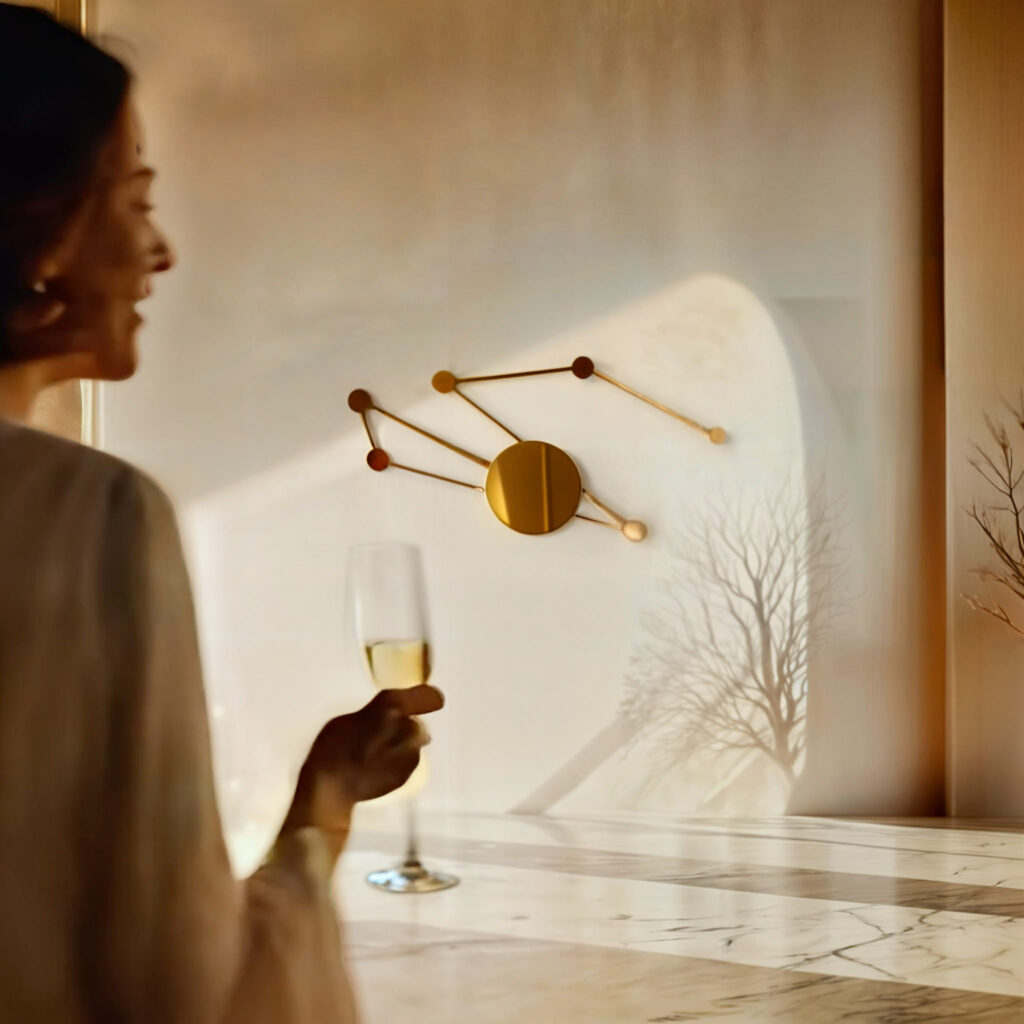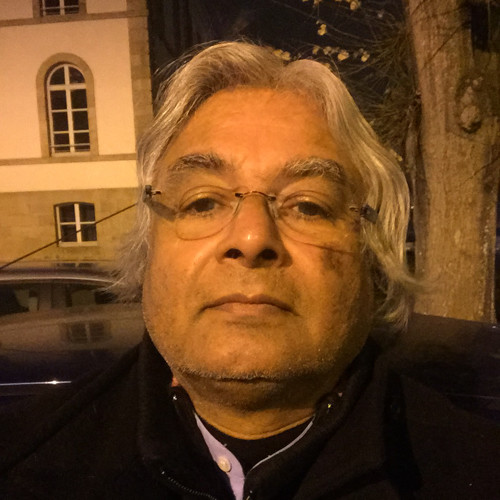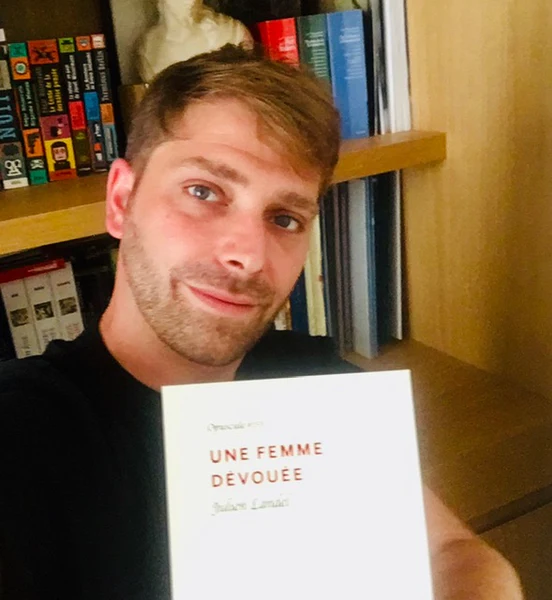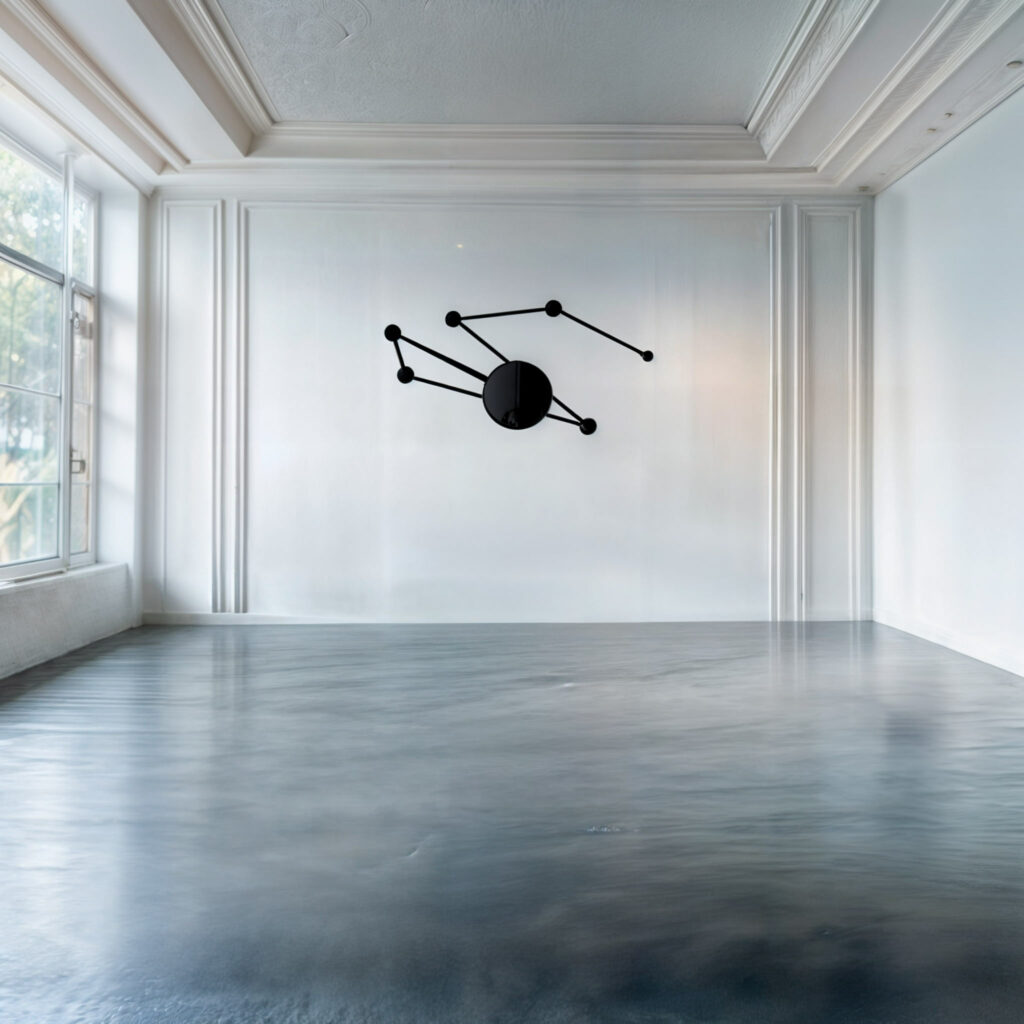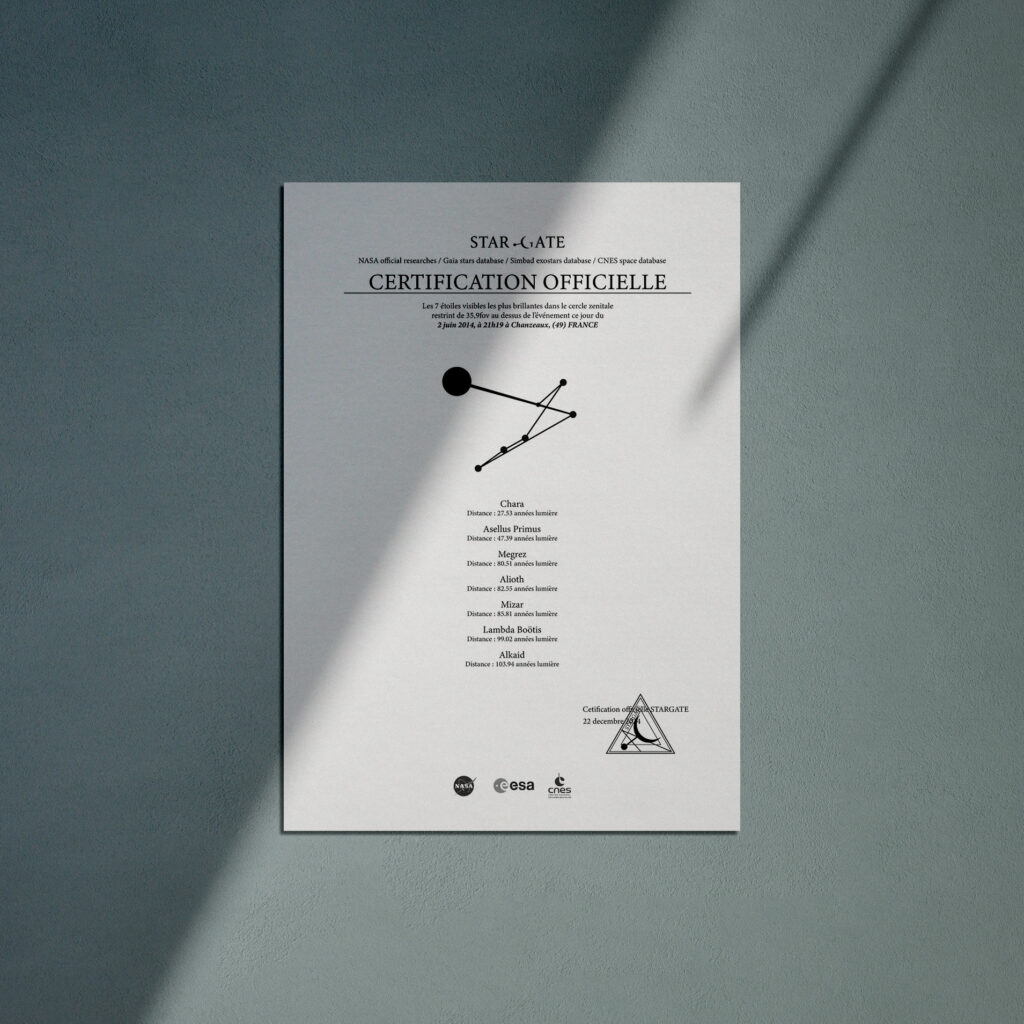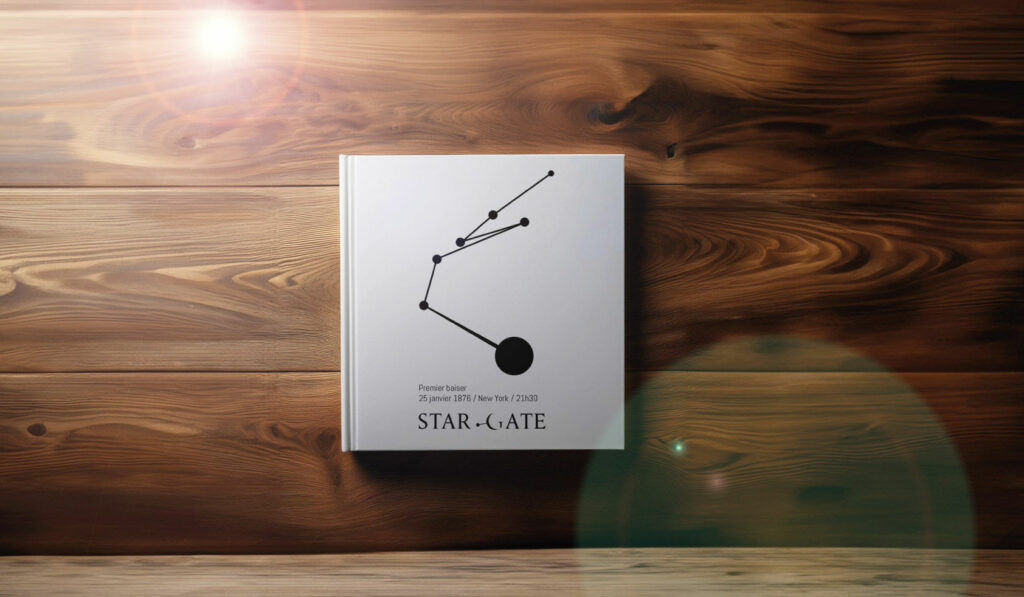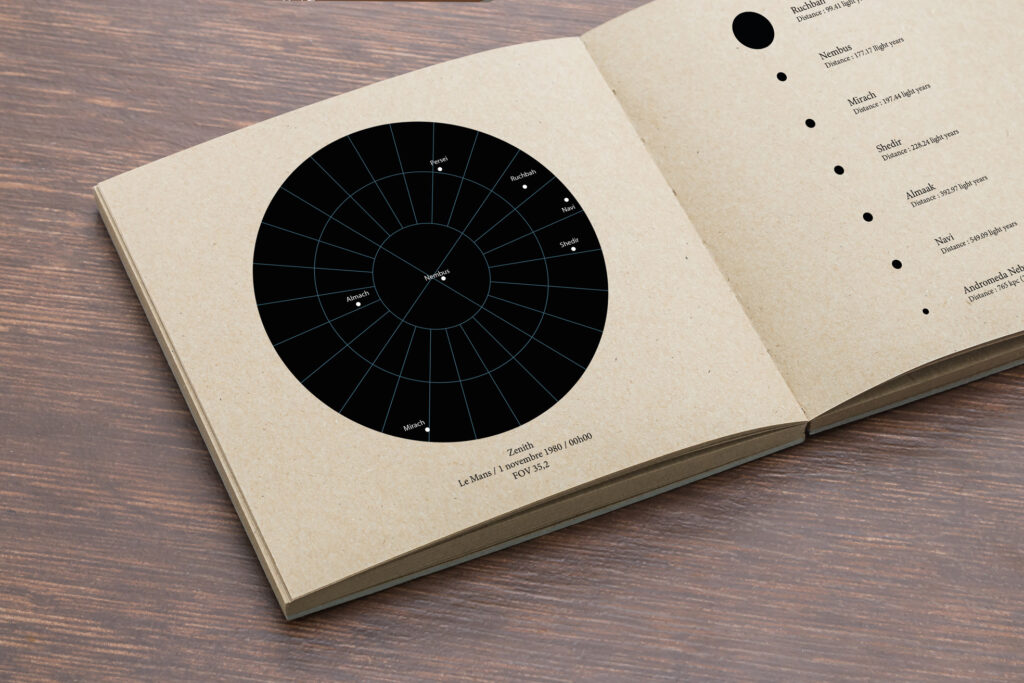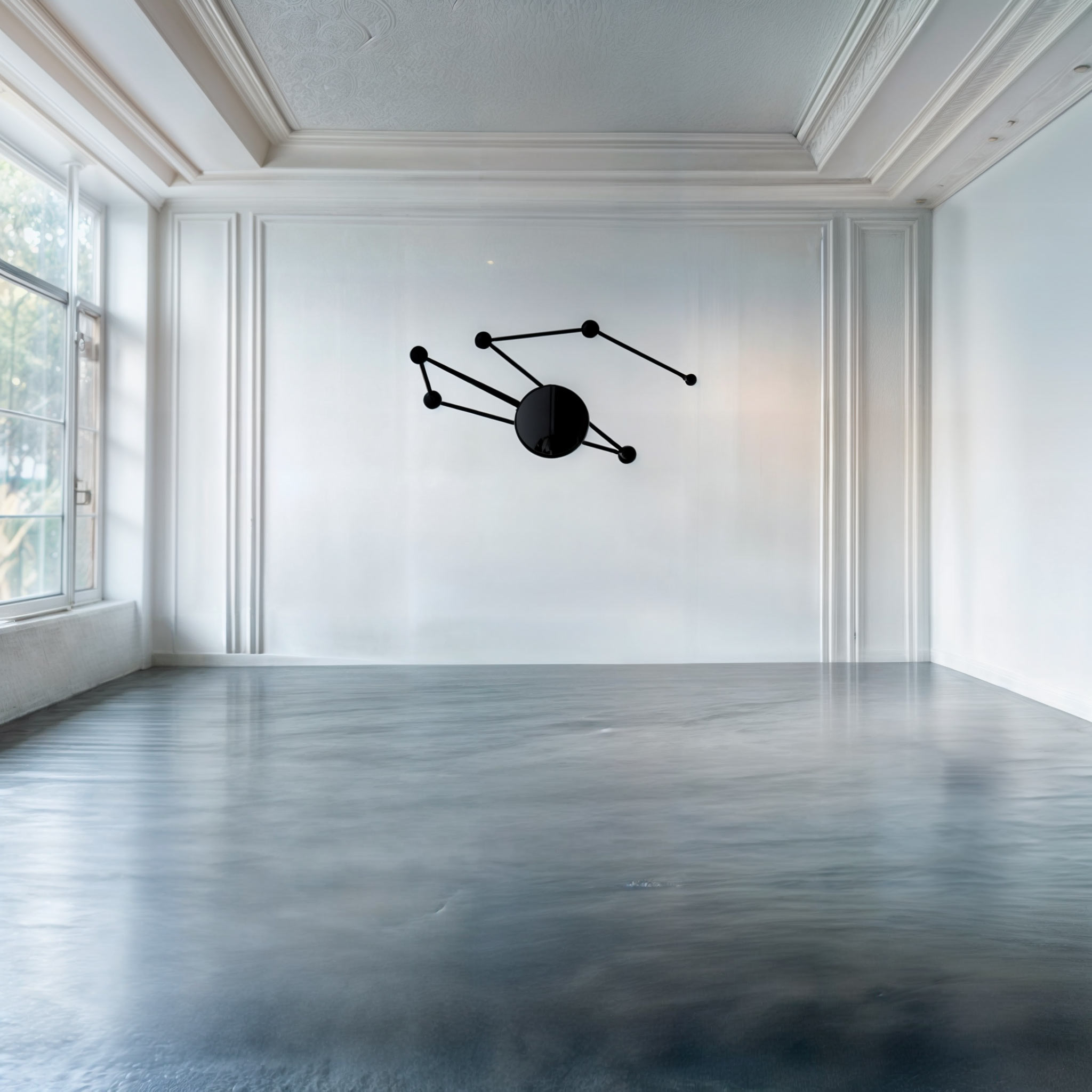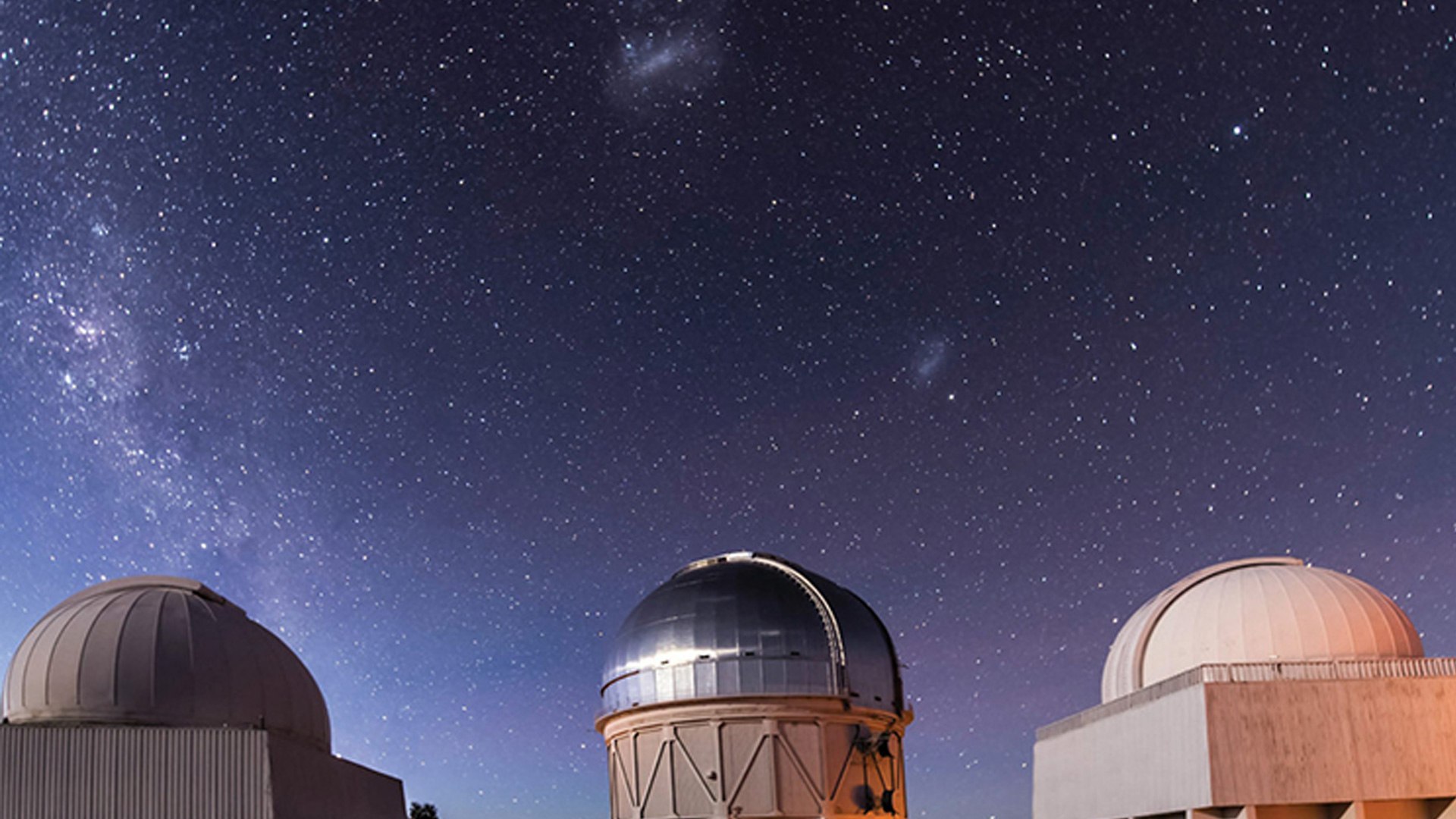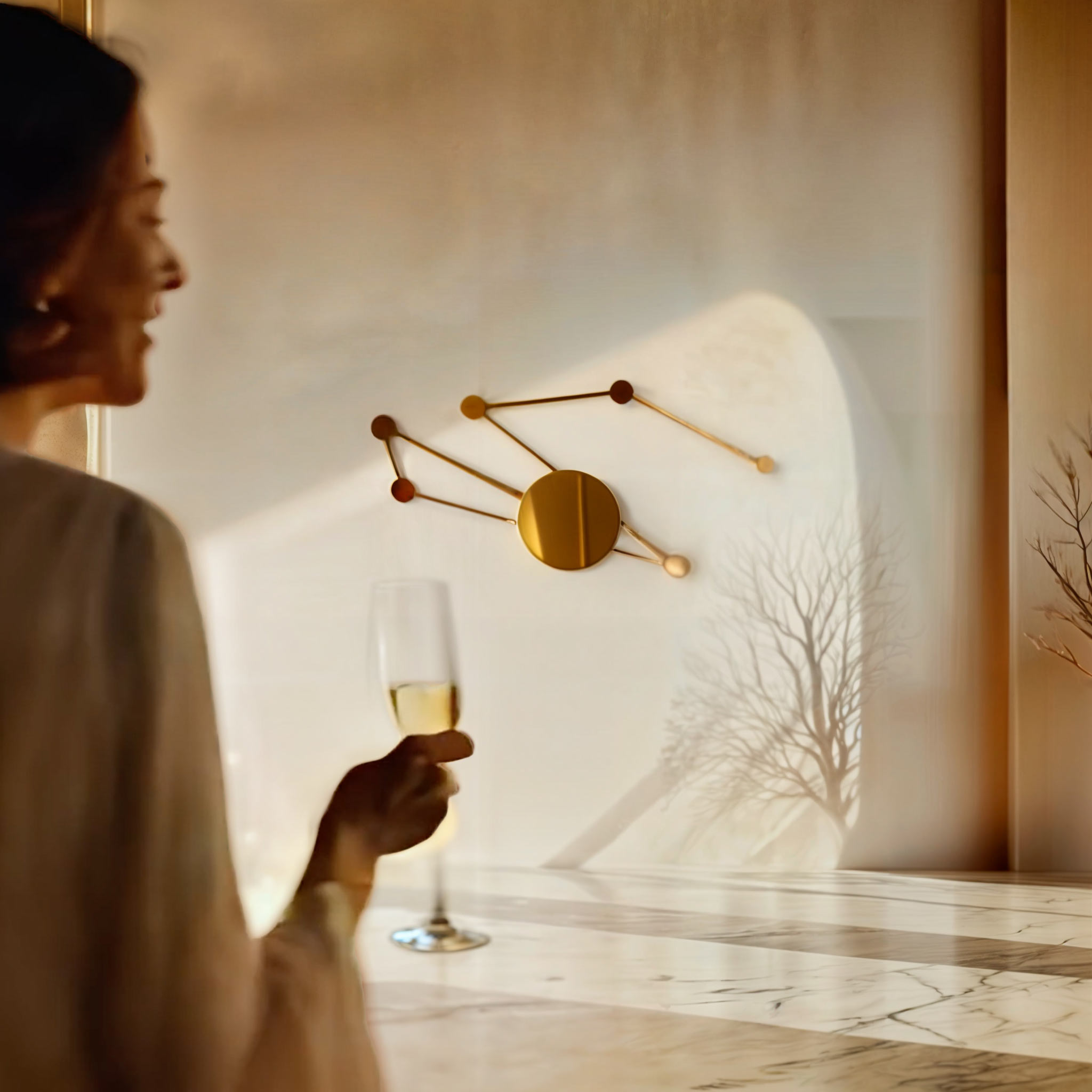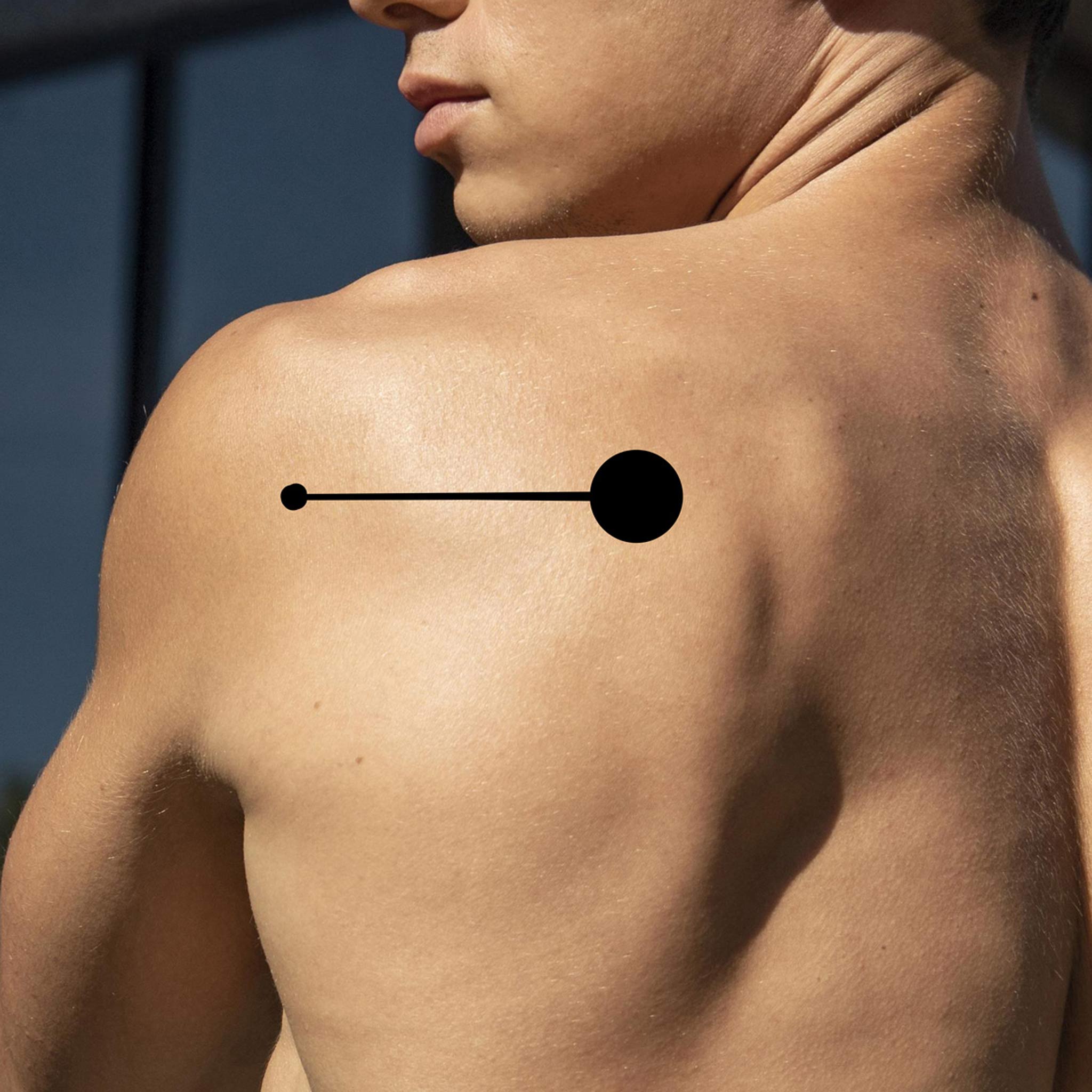Which moment stands up to the darkness?
Blue giants blaze, and emotions travel through space.
Burning Blue reinterprets the cosmic imprint left by a forgotten passage. It rekindles a secret, luminous bond with the world, rediscovers the fleeting moment, revives a lost emotion, and inscribes the ephemeral sensation into the starry sky.
Through Burning Blue, Vidya-Kélie captures this instant and, through these cosmic connections, unveils an alternative and singular reality.
ART GENERATOR
BURNING BLUE is an interactive artwork that merges art and science to explore the connection between human emotion on Earth and in space. In collaboration with research from NASA, Simbad, and the ESEA agency (Gaia data), the artist generates unique constellations in real time. This project makes it possible for anyone to create and commemorate a personal event by designing 24-carat gold-plated brooches that represent the stars present at that precise moment. A poetic gesture that weaves our relationship with the universe into everyday life.



A UNIQUE SCULPTURE




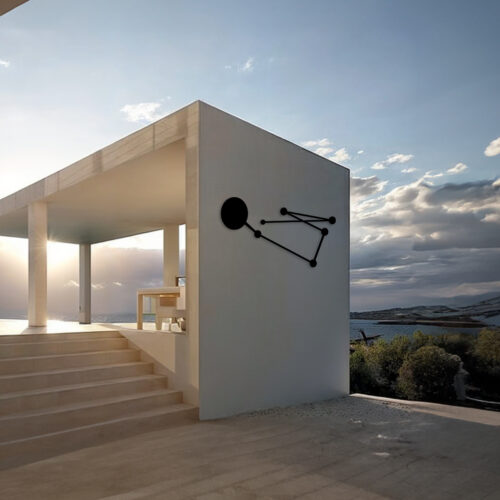


A MOMENT, A SCULPTURE
Each piece, ranging from several meters to just a few centimeters, becomes a fragment of the universe, signed by the artist, linking human history to the cosmic.
FROM THE UNIVERSE
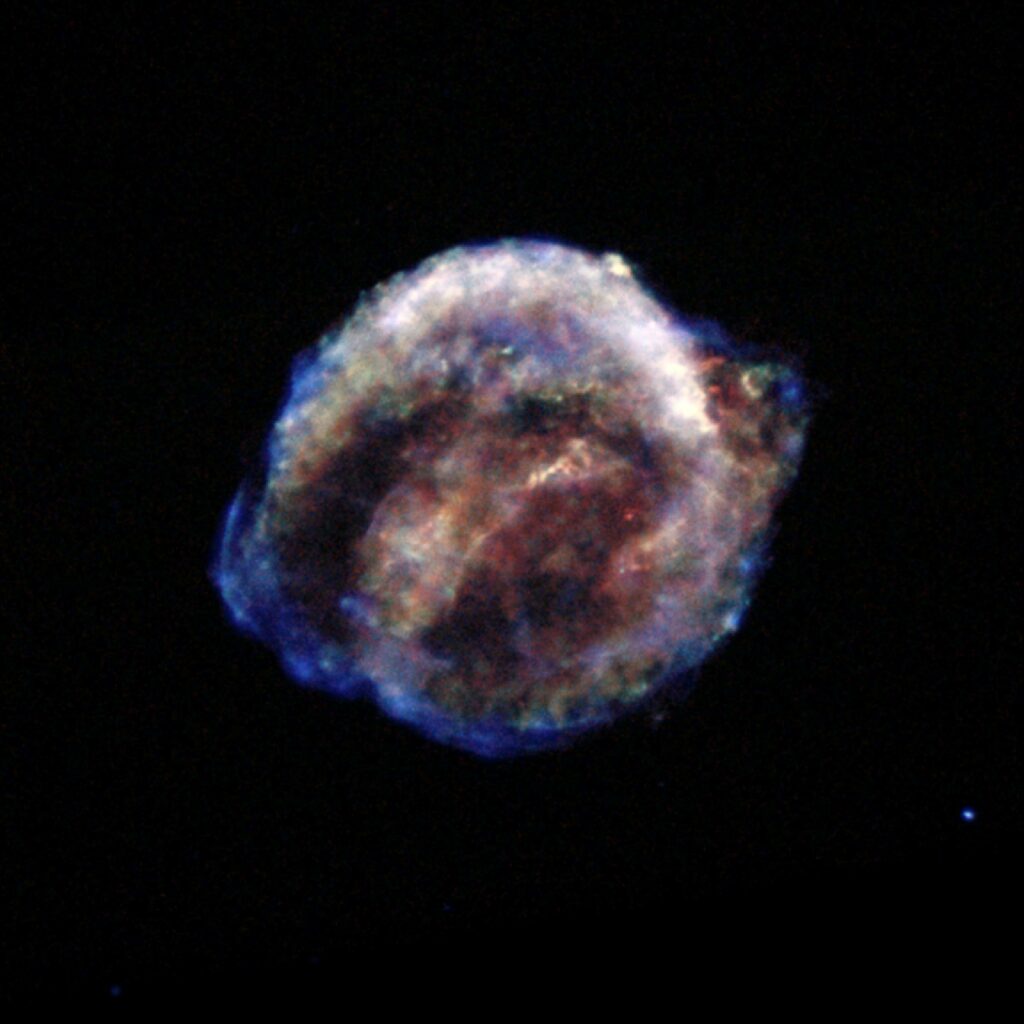
BURNING BLUE REVEALS HOW EMOTIONS CAN BE SHARED
Celebrations unveil an abstraction full of meaning and transmit it through light, a moment suspended in the universe, forever sculpted.
AMONG THE STARS

UNIQUE POSITION IN THE SKY
The abstract symbols known as BURNING BLUE represent the exact positions of the Earth in the universe relative to a specific event.
These unique works combine celestial knowledge obtained through cutting-edge technologies with refined luxury craftsmanship at the micron level, using noble materials such as gold, marble, or diamond.
NEWS
"The right side [of the field equations] contains the components of the energy tensor, which describe the distribution of matter, and the left side expresses the properties of space-time. Thus, according to our theory, the energy tensor determines the structure of the space-time continuum."
— Albert Einstein The Meaning of Relativity (1922)
"The discovery that individual events are irreducibly random is probably one of the most significant findings of the twentieth century."
— Anton ZeilingerDance of the Photons: From Einstein to Quantum Teleportation (2010)
" Ô grand astre ! Que serait ton bonheur, si tu n’avais pas ceux que tu éclaires ? Depuis dix ans tu viens monter vers ma caverne : tu en aurais été lassé toi-même, sans moi, mon aigle et mon serpent. Mais nous t’attendions chaque matin, nous te prenions ton trop-plein et te bénissions. "
— Friedrich NietzscheAlso sprach Zarathustra (1883)
"La thèse première du post-contemporain est que le temps change. Nous ne vivons pas uniquement dans un temps nouveau ou un temps accéléré, mais le temps lui-même – la direction du temps – a changé. Nous ne sommes plus face à un temps linéaire, dans ce temps où le passé était suivi du présent et ensuite du futur. C’est bien plutôt l’inverse qui se joue : le futur a lieu avant le présent, le temps arrive du futur."
— Armen Avanessian & Suhail Malik, Le Temps-complexe : sur le postcontemporain (traduction de Johan Faerber, présentation de Lionel Ruffel), Éditions Brook, 2016.
"Le noir absolu est une sorte de non-lieu, une absence de lumière, une absence de couleur. C’est comme si, en le regardant, on regardait un vide infini, quelque chose qui ne peut être vu mais qui, pourtant, existe."
— Anish Kapoor, Vantablack: The Absolute Black (2016) INSPIRATIONS
INSPIRATIONS
"The right side [of the field equations] contains the components of the energy tensor, which describe the distribution of matter, and the left side expresses the properties of space-time. Thus, according to our theory, the energy tensor determines the structure of the space-time continuum."
— Albert Einstein The Meaning of Relativity (1922)
"The discovery that individual events are irreducibly random is probably one of the most significant findings of the twentieth century."
— Anton ZeilingerDance of the Photons: From Einstein to Quantum Teleportation (2010)
" Ô grand astre ! Que serait ton bonheur, si tu n’avais pas ceux que tu éclaires ? Depuis dix ans tu viens monter vers ma caverne : tu en aurais été lassé toi-même, sans moi, mon aigle et mon serpent. Mais nous t’attendions chaque matin, nous te prenions ton trop-plein et te bénissions. "
— Friedrich NietzscheAlso sprach Zarathustra (1883)
"La thèse première du post-contemporain est que le temps change. Nous ne vivons pas uniquement dans un temps nouveau ou un temps accéléré, mais le temps lui-même – la direction du temps – a changé. Nous ne sommes plus face à un temps linéaire, dans ce temps où le passé était suivi du présent et ensuite du futur. C’est bien plutôt l’inverse qui se joue : le futur a lieu avant le présent, le temps arrive du futur."
— Armen Avanessian & Suhail Malik, Le Temps-complexe : sur le postcontemporain (traduction de Johan Faerber, présentation de Lionel Ruffel), Éditions Brook, 2016.
"Le noir absolu est une sorte de non-lieu, une absence de lumière, une absence de couleur. C’est comme si, en le regardant, on regardait un vide infini, quelque chose qui ne peut être vu mais qui, pourtant, existe."
— Anish Kapoor, Vantablack: The Absolute Black (2016) 







